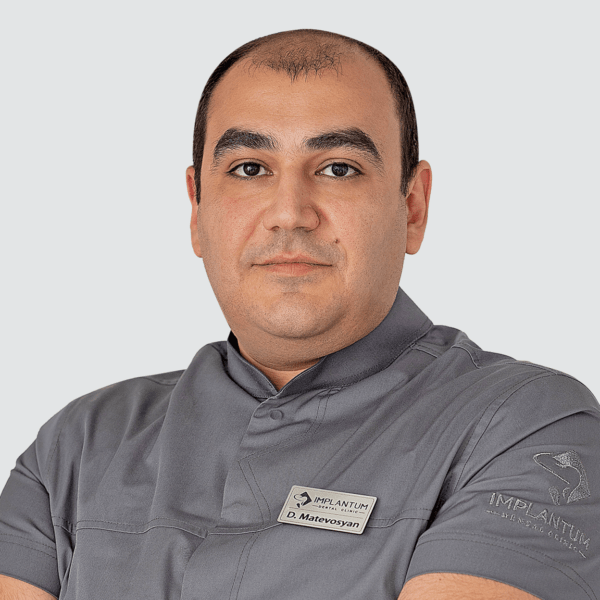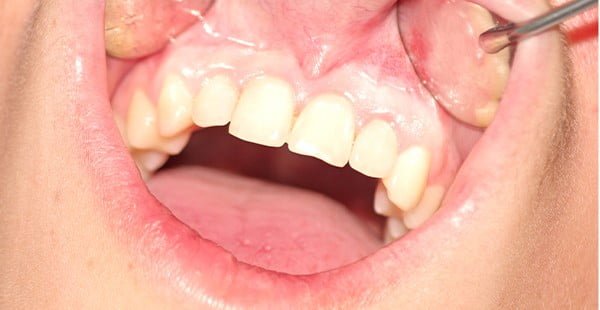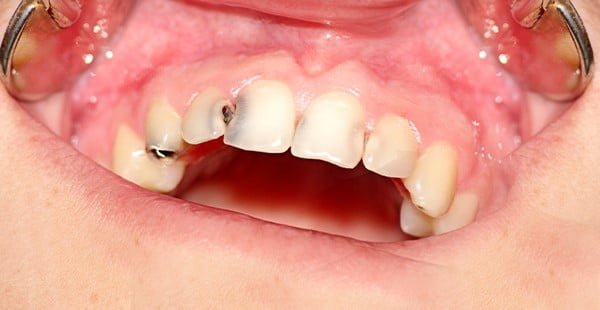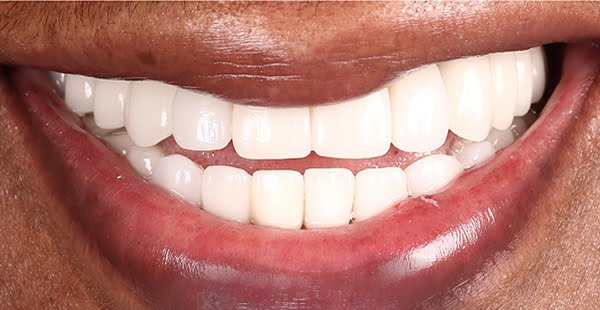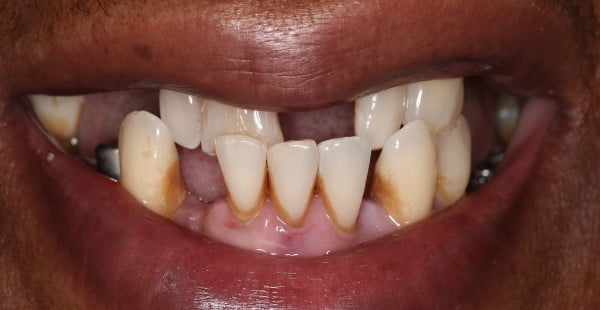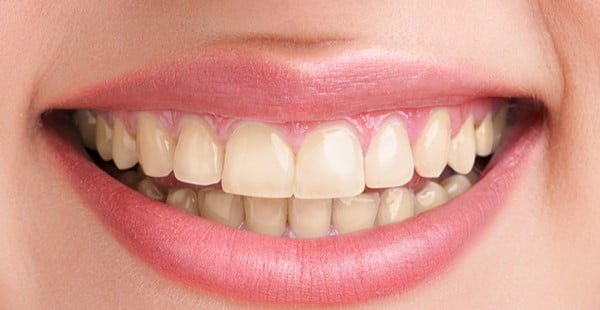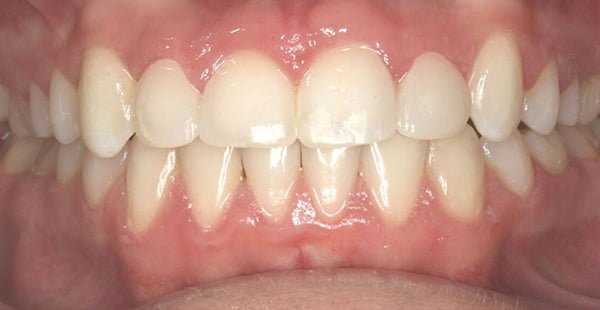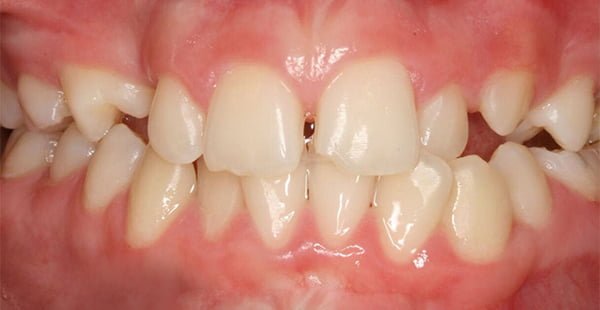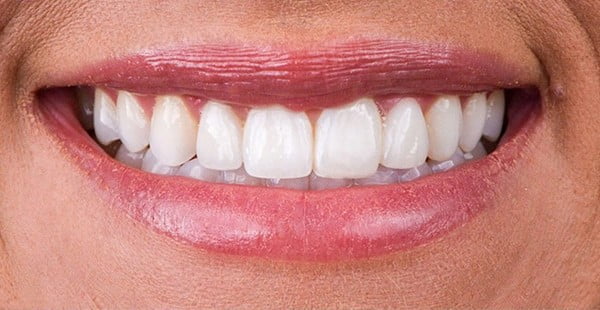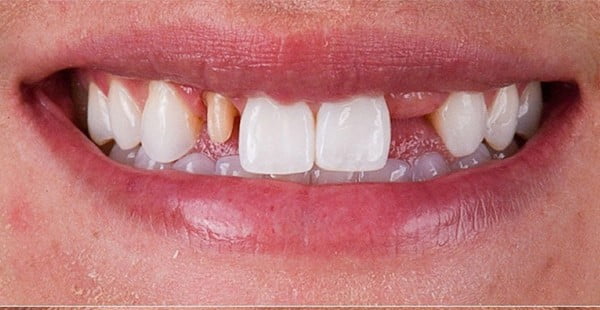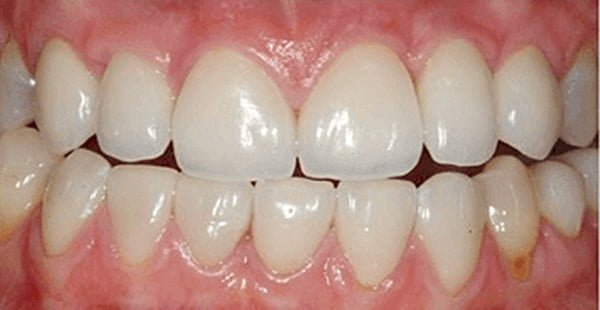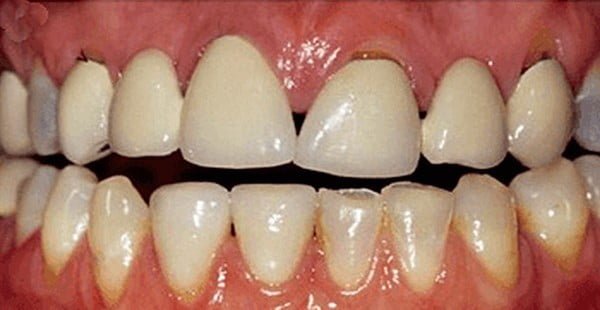Dentistry
If you do not know exactly what service you need, we recommend making an appointment (in person or by video call) online, right on our website, choosing a convenient date, time and even doctor =)
There are several ways of cavity treatment:
- Filling is the most popular and affordable way to restore the shape and function of a tooth destroyed by decay. When the dentist gives you a filling, he/she first removes decayed tooth tissue, cleans the infected area, and then fills the cleaned out cavity with filling material. By closing off areas where bacteria could enter, the filling also helps prevent further decay.
- Filling is the most popular and affordable way to restore the shape and function of a tooth destroyed by decay. When the dentist gives you a filling, he/she first removes decayed tooth tissue, cleans the infected area, and then fills the cleaned out cavity with filling material. By closing off areas where bacteria could enter, the filling also helps prevent further decay.
If decay is not treated in proper time, the pathology reaches the pulp, which leads to an inflammation called pulpitis. The process does not pass on its own. To treat it, doctor removes the decayed tissue with bur machine. Then, the tooth nerve is extracted. Next, the doctor handles mechanical treatment and cleaning of the endodontium. The empty root canal is then filled, and the permanent filling or crown is placed.
Link to individual page: https://implantum.am/en/services/treatment-of-caries-dental-filling/
Veneers are porcelain or ceramic layers that replace external layer of the teeth. They allow you to correct irregularities in the shape and color of tooth, and protect your teeth (for example, when playing wind instruments). As a result, the restored tooth becomes strong and looks the like the rest of the teeth. Veneers are made according to the shape, color and wishes of the patient’s teeth.
Veneer is a 0.2 mm thick plate that is glued to the labial, that is, the lip side of tooth and has aesthetic, restorative, camouflaging, phonetic and alimentary functions. Composite plate is an organic resin filled with ceramic or glass micro-particles. An example of ceramic plate is lithium-disilicate glass-ceramic.
Generally veneers do not require any aggressive preparation of the tooth enamel; in some cases (microdontia or abrasion) veneers can be made without any preparation of tooth substance. If the occlusal and gnathological principles are followed in the clinic by the operator and if the laboratory engineer follows all the procedural steps, this method of restoration has a long term perspective and can be widely recommended.
Materials and technology
There are different types of veneers — composite and ceramic. Composite veneers can be made directly (in the dentist’s chair in one visit) and indirectly (in a dental laboratory).
Ceramic veneers
Ceramic veneers are made from different types of ceramics. The most common types are porcelain feldspar and IPS Emax glass-ceramic, but ceramic veneers are more rarely made of zirconium dioxide blocks. Ceramic veneers are only made in the laboratory. The doctor prepares (grinds down) the tooth, then takes an records of the teeth and sends it to a dental laboratory where permanent ceramic veneer will be made for the patient within two weeks. To avoid the patient having to walk around with their teeth grinded, a temporary veneer made of plastic is placed on the tooth while they are waiting. The main types of ceramic veneers are described below.
Feldspathic (porcelain) veneers
First ceramic veneers were made from porcelain, because this type of ceramic allows to perfectly copy the optical properties of the tooth (shade and translucency of enamel). Porcelain veneers show very good esthetics — even no worse than E.max glass-ceramic veneers. Porcelain veneers are made using three laboratory techniques. First, the porcelain mass is applied layer by layer, and each layer is sintered in a porcelain sintering furnace at high temperature. Second, the method of pressing porcelain under high pressure and temperature. The third method, which is relatively new, is the milling of feldspar ceramic blocks (for example, Vita Mark 2 blocks) on CEREC machines (CAD/CAM technology).
When using porcelain, the best of these three methods will be pressed ceramic, because the veneers made of it have significantly greater strength. The flexural strength of the porcelain layering method is only 50-75 MPa. The bending strength of the press or CAD/CAM method is about 150 MPa. The latter is sufficient if you have a correct bite and no bad habits, but the next type of ceramic has even greater strength.
IPS Emax glass-ceramic veneers
- IPS Emax glass-ceramic (manufacturer — Ivoclar Vivadent) consists of lithium disilicate crystals that have the same coefficient of transparency as real tooth enamel, so veneers made from this material look very similar to real teeth. There are two types of IPS Emax material. First, there is the Emax PRESS material, which is designed for making veneers using pressing technique. The veneers made from this material are the strongest — they have a bending strength of approximately 400 MPa, which almost completely eliminates the risk of chipping. The so-called «thin veneers» are made from Emax PRESS, which are only 0.3-0.4 mm thick (standard ceramic veneers are 0.6-1.0 mm thick).
- Second version of the IPS Emax glass-ceramic is the E.max CAD material, which is produced as special blocks for milling on a CEREC-type CAD/CAM machine (CAD/CAM technology). The same manufacturing method is used for the next type of ceramic veneers — zirconia veneers. The strength of E.max CAD veneers is also very high — about 360 MPa, but no thinner than 0.6 mm can be made out of this material.
Zirconia veneers
These veneers are made of zirconium dioxide blocks by milling (CAD/CAM technology). The strength of these veneers is highly dependent on the type of zirconia blocks. If so-called raw, soft zirconia blocks are used, the bending strength of the veneers is around 900 MPa, but the aesthetics are lower due to the opacity of the material and its milky white color. If zirconia blocks with yttrium are used, the zirconia veneers are translucent and have good aesthetics, but their bending strength is lower (about 550 MPa).
In terms of aesthetics porcelain (feldspar) and IPS Emax veneers are significantly better than veneers made of zirconium dioxide. According to clinical studies (source), Katana UTML (Japan) is the closest to IPS Emax glass-ceramic by aesthetics, followed by Katana STML (Japan), BruxZir Anterior or Prettau Anterior (Germany).
Composite veneers
In order to install composite veneers, doctor grinds down thin layer of enamel, then, using adhesive systems, layers composite filling material. These veneers are made in the oral cavity and last for 3 to 5 years. The most common purpose of these veneers is to use them when one or two teeth in row are to be improved, or they are made in the laboratory: after making an impression, a model is made, the veneer is modeled and polymerized in special polymerization oven. At the clinic the veneer is fixed with liquid composite. The advantage of this method compared to direct veneers is that the composite is more completely polymerized, resulting in increased strength.
Lumineers
Ultra-thin ceramic veneers manufacturing technique patented by Cerinate (USA) is called Lumineers. This type of veneers is made exclusively in the laboratory of Cerinate, located in California (USA). The advantages of this type of veneers over classic veneers are:
- Non-invasive: no grinding of hard dental tissues is required;
- higher aesthetics in «Hollywood smile» style;
- possibility of removing and replacing installed veneers without damaging the dental tissue.
It is not recommended for use in cases of «stained» or colored enamel, as lumineers are transparent.
You can get an express consultation about veneers right now via WhatsApp video call!
«Before-after» gallery
Link to individual page: https://implantum.am/en/services/veneers-aesthetic-dentistry/
Dental implantation is a modern method of dental restoration.
In order to have a dental implant, whole series of procedures must be carried out, starting with building up bone volume (if there is not enough bone to place an implant) and placing an artificial metal root, to subsequent dentures. Dental implantation is a long procedure that requires patience from the patient. However, the result is worth it despite the price of implant. That is artificial teeth that fit perfectly into the rest of tooth row and perform all the functions of natural, living teeth.
We use the best modern systems, so most healing cases take place without complications. You can put dental implant at a convenient time and at favorable price by contacting us. The implant is placed under local anesthesia and the patient feels no pain during the procedure. When the healing process is compared to the extraction process, it is quicker after prosthetics. Dental implants can restore the functionality of teeth and aesthetics of the smile even with complete loss of teeth. The only thing that matters for dentures is the condition of bone tissue.
What does an implant consist of?
Artificial tooth itself, that is installed in place of the natural tooth, consists of three main parts:
- An implant is an artificial tooth root that is made of titanium, the first biocompatible metal to human body. The implant is shaped like a root and looks like an ordinary screw with thread (depending on the treatment, implants of other shapes can be used) and is placed in the bone tissue, which means that it is completely hidden and can’t be seen.
- abutment is the connecting element between implant and prosthesis
- denture can be a single crown, a removable or permanent denture that replaces the top of teeth
Main stages
Classic dental implantation has a history of 40 years. This method uses standard root implants in the form of screws with different diameters and lengths. Classic implantation requires a certain amount of bone tissue by volume in order for the implant to be fixed in the bone.
Classic implantation lasts 3-6 months, which are required for the implants to take root — only after that they can be maximally loaded by prostheses installation.
- preparatory stage: study of bone condition, treatment of teeth and gums, making a treatment plan, selection of implants and future dentures
- placement of implants: placement of the implant, engraftment, placement of abutment
- dental prosthetics: fabrication and installation of dentures
Preparatory stage
- Laboratory analysis, identification of contraindications (visit to general physician), examination of bone tissue. The doctor will need: an orthopantomogram (panoramic image of the entire jaw, in which hidden diseases can be detected), X-ray (enlarged image of particular area), CT or CT scan (3-D image of the jaw, which allows to study the condition and volume of bone tissue)
- treatment plan development
- сpreparation of the oral cavity for surgery, patient compliance with hygiene requirements
- oral cavity preparation: treatment of teeth and gums, professional teeth cleaning and whitening
- selection of implants and dentures (removable or permanent, metal-ceramic, metal-plastic or zirconium oxide, choice of color of future artificial teeth)
- If there is not enough bone volume, it may be required to increase it
Bone volume increase
- Bone grafting: a piece of bone tissue is taken from specific area (usually the base of the lower jaw) and placed under the gum in the area where the implant will be placed. After the bone block has taken root, it is possible to perform the implantation after a certain period of time
- synthetic bone augmentation: special bone tissue analogs are placed in the future implant area under the gum and are covered with a special membrane. After some time, the bone tissue and the grafted material are fused, after which the implant can be placed
- sinus lifting (only performed on the upper jaw): it is an operation to lift the floor of the maxillary sinus, which allows space for bone augmentation. Closed sinus lifting: this is augmentation of the bone with synthetic materials and installation of an implant at the same time. Open sinus lifting is a two-stage surgery: first the floor of the sinus is lifted, the empty space is filled with bone tissue analogues, and after a few months after their engraftment implants are installed.
Preparatory stage generally lasts about a month. If a bone tissue volume increase is required, the preparations for operation can last as long as 2 or 3 months.
Installation and engraftment of implants
- anesthesia is applied
- incision in the gum is made
- indentation of implant shape is made in the bone tissue by special instruments
- implant is being installed, cover is placed to protect the implant from shifting
- after engraftment, abutment is placed
On average, it takes 3 months for the implants to fuse with the bone tissue so that they do not move under the strong masticatory pressure. To prevent patient from having to walk around without teeth during this time, removable or lightweight plastic prostheses can be placed after the abutments have been fixed.
Prosthodontics
- after placing of abutments impression of the jaw is taken, according to which the dental technician makes the dental dentures in the laboratory
- prosthesis is fixed on the implants with special locks and fasteners
If you are looking for a reliable dental implant clinic, contact IMPLANTUM. We guarantee an excellent treatment and high quality implants. By using our services, you will get a lifetime guarantee and you will be sure to be happy with the results!
Link to individual page: https://implantum.am/en/services/implants/
Teeth whitening changes the enamel shade
Teeth whitening refers to the field of cosmetic dentistry and has a number of proponents and opponents. Proponents believe that modern techniques can achieve significant results with little risk to your health. Opponents, on the other hand, believe that teeth whitening can lead to poor oral health.
Whitening products affect only natural enamel, whitening is not performed if there is filling on the front teeth — its shade will not change, but teeth will become lighter, it will be noticeable. If preferred, you can replace filling after the procedure by matching it to the color of the tooth enamel. Whitening takes generally 45 minutes, along with preparation it will be one hour.
Our clinic offers three types of whitening
- «American teeth whitening»: that innovative way to whiten tooth enamel Amazing White takes leading position in the ranking of the best dental techniques aimed at restoring the whiteness of tooth enamel. The method is based on special gel that contains active ingredient hydrogen peroxide which effectively whitens the tooth crown without damaging the structure of tissues.
- “German whitening«:this system is based on particular gel in which oxygen molecules are released under the light of special lamp. Active oxygen penetrates deep into tooth layers and remove even strong and persistent pigmentation.
- «Philips Zoom 4 Whitening» — The Zoom 4 teeth whitening system is the most innovative and modern teeth whitening system. The whitening method used in this system is based on the ability of oxygen molecules to remove even the brightest and most persistent pigmented spots. The system is absolutely safe to use and causes no discomfort or pain for the patient.
Professional cleaning
Brushing is an important addition to your daily oral hygiene routine. Even if it is of good quality, soft plaque, deposits and tartar gradually build up on the enamel surface. Smoking, drinking coffee, sweets or colorful foods can make this process happen faster. Professional cleaning removes these plaque, prevents the development of caries and bad breath.
Procedure is better to be carried out regularly. If plaque, buildup, and tartar are not removed, tooth decay will begin to form underneath. Brushing is much more affordable than dental treatment, so this prevention is effective and profitable.
Link to individual page: https://implantum.am/en/services/whitening-cleaning/
Caries affects hard tissues of tooth, and without treatment, the lesion area becomes larger, it progresses to pulpitis, periodontitis, can lead to inflammation of nerves, root canal damage, and often tooth loss
Stages of treatment
- diagnosis, examination to evaluate the tooth’s condition. Dental picture (X-ray) may be required;
- local anesthesia. At Implantum dentistry we use effective, safe medications. Full anesthesia is guaranteed;
- removal of infected tissues;
- treatment of formed dental cavity, use of local means for disinfection;
- filling.
Treatment of tooth decay without complications is carried out within 1 visit. In case of deep lesions, pulp exposure and partial destruction of dentin, and inflammation, two visits may be required (laying the medication, placing temporary filling and the final filling after a few days).
We use light cure fillings of quality materials with minimal shrinkage. This guarantees safe filling: no microcracks, no voids. The filling material is matched to enamel shade, and the filling restores the original shape. The filling after installation is invisible, looks like the patient’s own enamel.
Link to individual page: https://implantum.am/en/services/endodontics-root-canal-treatment/
Orthodontics is a dental field that treats bite problems.
The entire dentoalveolar system is corrected by restoration of normal tooth row.
Aesthetic dentistry gives everyone the opportunity to have beautiful smile, no matter what it initially looks like. Correction is based on the principle of golden ratio in order to create harmonious facial proportions. However facial features are unique for every person. Therefore, the course of action is individual with each correction, as human face is asymmetrical.
Our clinic provides orthodontic treatment for bite problems and dentoalveolar anomalies. We use different technologies of correction: braces, mouth guards, other devices and appliances.
The entire dentoalveolar system is corrected by restoration of normal tooth row.
- The distribution of masticatory load is normalized. If it is disrupted, the enamel erosion can get faster and there is risk of tooth decay. Bone, gum health, etc. are also related to the masticatory load;
- aesthetic defects are removed: teeth look straight and neat, and the smile looks perfect
- risk of dental disease is reduced. When the teeth are curved, rotated, tightly closed, the plaque builds up faster, which causes demineralization of enamel, tooth decay, gum inflammation;
- Dental structure disorders can cause discomfort while chewing, problems with diction, disrupt work of other elements in maxillary system, and even change the facial proportions.
These and other defects can be corrected by bite correction. Two types of orthodontic appliances are used to correct the bite.
Braces
These are structures made of plates that are attached to teeth and arches that connect them. The arches have corrective effect by aligning teeth and putting them into proper position. Our orthodontists use two types of systems:
- vestibular. Traditional designs with plates attached to the front surface of teeth;
- lingual. The plates are attached to the inner surface of teeth, the entire structure is invisible.
Brace systems can be self-ligating or ligature.
Self-ligating braces require less frequent adjustment and are more convenient to use, but sometimes ligature systems are better for treatment purposes. Braces (overlay plates) are made from different materials: metal, ceramics and composite compounds. Ceramic braces are the least noticeable, and they allow also to keep the aesthetics of smile.
Caps
Removable appliances that are put on the entire tooth row. They are made in sets and are placed consecutively, so that each new mouth guard continues the already made correction. The caps are transparent, invisible, and in some cases, they can be put on only at night.
Auxiliary constructions can be used: orthodontic buttons, expanders, arches, etc. The treatment is completed with retention appliances, which are placed on the inner surface of teeth and help to fix the correct its position.
Link to individual page: https://implantum.am/en/services/orthodontics-braces/
Dentures are dental structures that replace teeth. Dentures restore the dental anatomy and physiology and bring back a beautiful smile. Properly made dentures don’t cause any discomfort, the patient almost immediately begins to feel them as his/her own teeth. Artificial teeth can be made to be more perfect than the natural ones.
Dentures are used for both full and partial absence of teeth. Modern orthopedic dentistry offers a wide range of dentures made of different materials.
Dentures are distinguished between removable and permanent types according to its structure
- Permanent dentures are fixed firmly, and cleaning them is no different than brushing of regular teeth. Today this option is the most convenient one, especially when it comes to the restoration of single teeth.
- Removable dentures can be inserted or removed by patient, and after removal the dentures can be cleaned and food debris can be removed.
Dental crowns and tooth bridges
Crown is a prosthetic tooth. Crown replicates tooth anatomic shape and allows to restore its masticatory function. The crown is attached to the damaged tooth and prevents it from further decay. Crowns can be a single tooth, or they can be fused artificial teeth that will be called a bridge.
Metal ceramic crowns are constructions that consist of metal base on which ceramic mass of real tooth color is applied. This type of crown is very durable. Because of the metal structure underneath the layer of ceramic, the color of the structure may not match natural teeth under different lights. The presence of metal in the mouth may have negative impact on the oral health, because metal ions have irritant effect on the body and can cause allergic reactions. Metal ceramic crowns are indicated for a single tooth restoration or in case of increased load on long bridge (more than 4 crowns in bridge), if the requirements for aesthetics take second place to durability.
Modern alternative to metal-ceramic is zirconia crowns, which have a number of additional advantages and exclude negative factors connected with metal.
Zirconia crowns are made of zirconium dioxide and covered with ceramic. They are fully biocompatible with human tissues, non-allergenic, lightweight, strong and aesthetically superior to any other crown.
Zirconium dioxide is the «treasure of dentistry» and one of the most innovative materials for artificial teeth. It is as similar to the features of natural tooth tissue as possible: it has snow-white shade, is slightly transparent and extremely durable. Zirconia crowns are used both for single restorations and implant restorations as part of dental bridges consisting of more than 10 consecutive dental crowns. In modern prosthetics it is the most effective method of tooth restoration.
The frameworks of prosthetic constructions based on this material are very thin and are only 0.5 millimeters thick. This also reduces the degree of tooth grinding. The zirconia material has very low thermal conductivity and that solves the problem of tooth sensitivity. Therefore, the sensitivity threshold significantly improves with metal-free crowns.
Ceramic crowns are made of pressed glass-ceramic with the addition of leucite crystals, which significantly strengthens the construction. Ceramic crowns do not differ from real teeth in appearance and do not lose their original brightness after many years. They are strong enough and perform well in front teeth, but are more brittle than zirconia crowns, so they are not recommended for masticatory teeth. Ceramics are fully biocompatible with natural tissues in the mouth, and do not cause allergic reactions
Not only crowns but also partial dentures, inlays, veneers and lumineers can be made of all-ceramic. This refers only to the amount of tissue that remains after the preparation of the tooth. Ceramics can keep a tooth «alive» even if most of it is missing.
Treatment involves two visits. At the first visit, all the decayed tissue is removed, and the doctor takes an impression of the upper and lower jaw in order to send this form to the laboratory. The technician makes the missing parts of the tooth on a plaster model of the jaw.
At the second visit, a ceramic inlay is tested, and the patient sees its shape and color. If everything is satisfactory, then the ceramic filling is firmly attached to the light-cured cement, which is much stronger in bonding strength to the tooth than a regular light cure filling.
Shape of such inlays on the masticatory surface is always of relief. This is done for a better grinding of food and a perfect occlusion of the teeth. If the load on the teeth is balanced, it is a good prevention of diseases of the temporomandibular joint (TMJ). Patients often deal with the symptoms of TMJD (clicking, crunching, painful opening or closing of the mouth).
Removable prosthetics
This type of prosthetics is considered a temporary stage, as modern implant prosthetics allows you to completely replace removable dentures. The disadvantage of this technique is that there is no complete chewing process, all the pressure from the grinding of food is transferred to the gum. Over time, bone and mucosal atrophy occurs. Prosthesis is poorly fixed, requires the preparation of supporting teeth, and also takes large area in the mouth, as it is shaped like a saddle, so it is possible to have a support under it in the form of edentulous mucosa area.
Link to individual page: https://implantum.am/en/services/orthopedics-crowns-and-dentures/
Periodontium is the complex of tissues that surrounds the tooth and ensures its attachment to the jawbone. This complex includes gingiva, periodontal ligament that connects the root of tooth to bone socket, alveolar bone, and tooth cement.
Periodontal diseases have one of the leading places among the urgent problems in dentistry. According to the WHO, destructive changes in the periodontium with involvement of the bone tissue in the process are most often identified in persons aged 35 to 44 years — from 65% to 98%, and at the age of 13-19 years — from 55% to 95%. Periodontal disease has negative effect on the digestive function, psycho-emotional sphere, reduces the body’s resistance to the action of infectious and other factors, and results in sensitization of the organism. Patients are disturbed by inflammation, bleeding, and especially by gingival recession (reduction in level), leading to tooth elongation and related aesthetic disorders. Among all periodontal diseases, 90-95% are inflammatory, such as gingivitis and periodontitis.
Gingivitis, periodontitis and periodontosis
- Gingivitis is inflammatory process in the tissues of gingival margin when only the gingival surface tissues are affected.
- Periodontitis is inflammatory process that involves all periodontal structures. It is characterized by destruction of periodontal junction and progressive destruction of alveolar processes of jaw bones.
- Gingivitis and periodontitis are two interrelated forms of the disease, because the inflammatory process occurs first in the gum tissues, and gradually it involves the underlying structures of the periodontium: the gingival ligament and alveolar bone.
Periodontal disease is based on an atrophic-dystrophic process in the periodontal tissues. The disease has quite scarce symptoms and a slow course. Its cause has not yet been discovered.
What brings patients to the doctor? Mostly it is a cosmetic defect, which means that the roots of the teeth are being exposed. Patients complain that «the gums are settling and the teeth are getting long». In some cases, patients are concerned about gum itching as well as pain from the exposed necks of the teeth.
There is no etiotropic treatment for periodontal disease as the cause of disease has not been identified. Only symptomatic treatment, that is, the elimination of hypersensitivity of the teeth, massage or auto-massage of the gums to correct trophic disorders, filling the so called wedge-shaped defects, is carried out. Sometimes vestibuloplasty is prescribed.
Periodontal disease cases are always very individual, so you should sign up for a video consultation by clicking on the button below to get an approximate price.
«Before-after» gallery
Link to individual page: https://implantum.am/en/services/periodontitis-and-periodontosis/
Surgical dentistry is a dental field that practices treatments such as: tooth extraction surgery, bone grafting, tooth preparation and implants, as well as a variety of aesthetic surgeries in periodontics.
Dental surgery also includes tooth extraction. In cases where treatment is ineffective and tooth extraction is necessary, the dental surgeon will remove the tooth professionally, quickly and without pain. Wisdom teeth that have grown incorrectly or are in the way can also be extracted. When tooth extraction is performed by dental surgeon, the risk of complications is minimized. Surgeons also remove dental cysts located on the root apex.
In addition, every specialist in surgical dentistry will advise the patient about dentures or even implants in place of the missing tooth before removing it.
Dental surgery includes:
- Tooth-saving treatment
- Inflammation treatment (periodontitis, periostitis, osteomyelitis, maxillary sinusitis, abscesses, phlegmons)
- Tooth extraction (partial or full)
- Oral cancer treatment
- Oral preparation for subsequent prosthetics
- Facial tumor removal
- TMJ disorders treatment
- Trigeminal neuralgia treatment
- Salivary gland disorders treatment
- Primary surgical healing of face, neck, and oral cavity wounds
- Orthognatic surgery (plastic and reconstruction jaw surjeries)
- Diagnosis of specific diseases appeared in oral cavity (actinomycosis, tuberculosis, syphilis)
- Periodontal surgery
Implantum Department of Surgical Dentistry provides treatment related to tooth extraction, preparation for implants and plastic surgery.
Surgical procedures are carried out in equipped rooms, under sterile conditions ensuring safety and quality results.
Link to individual page: https://implantum.am/en/services/surgery/

